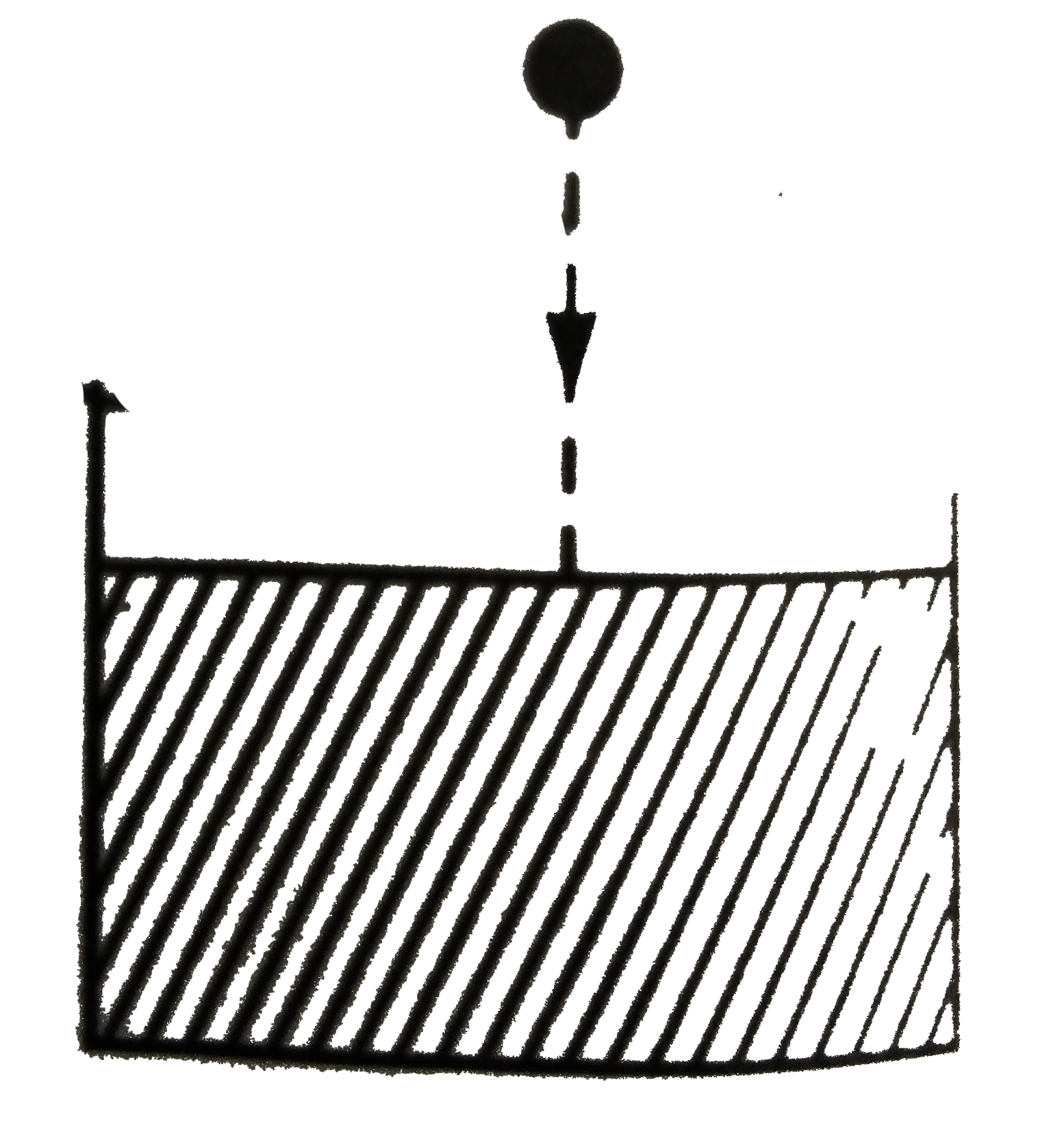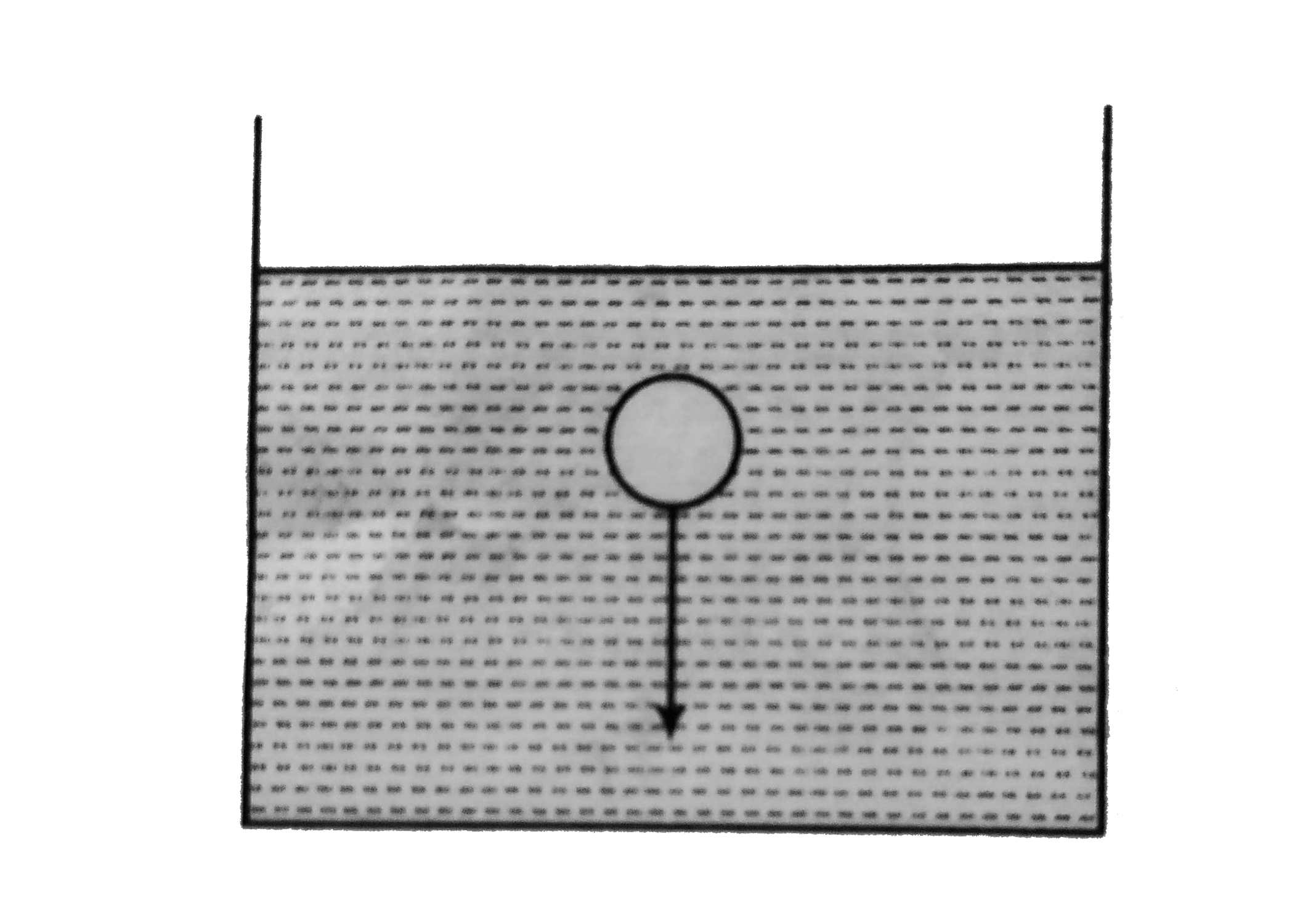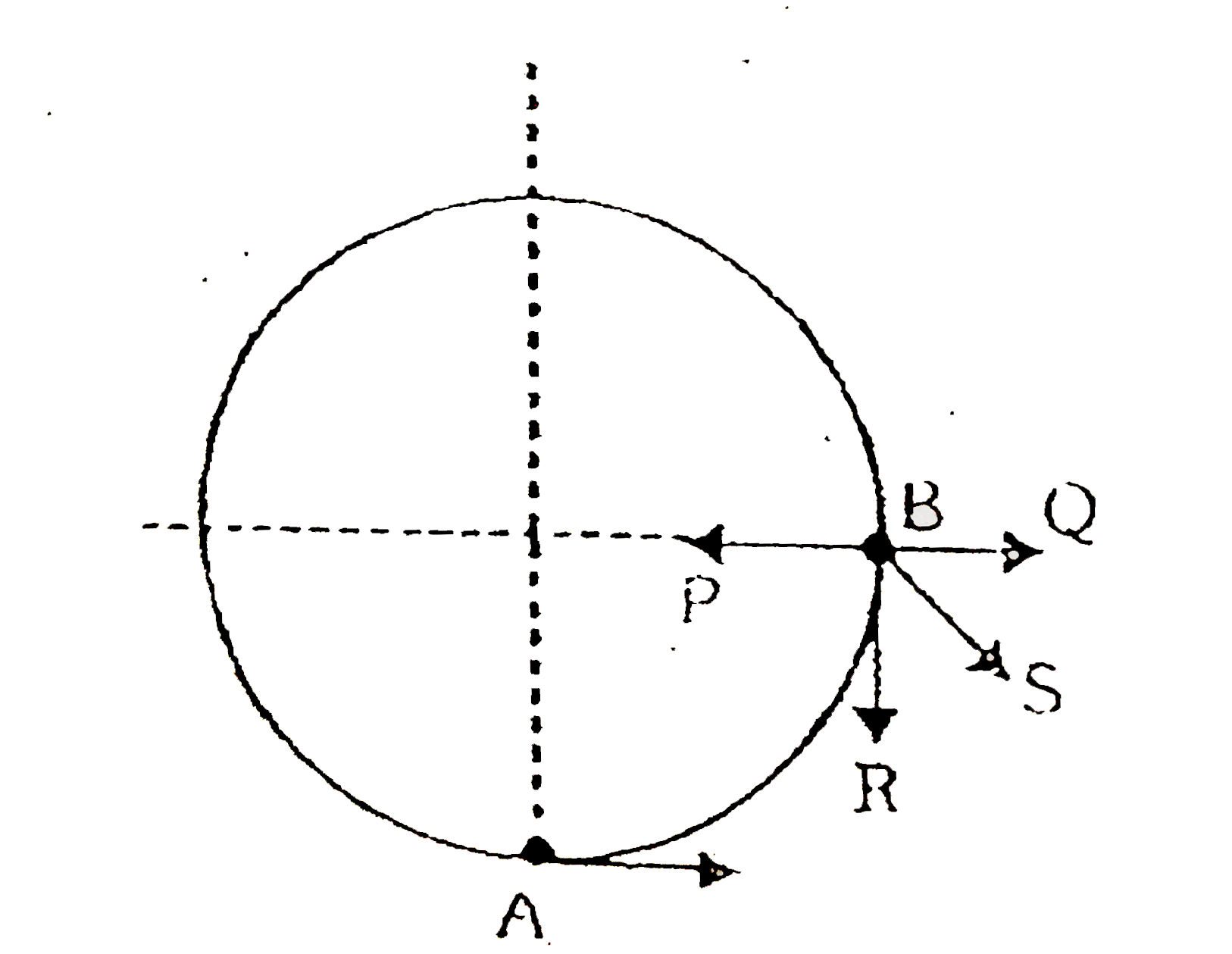A solid ball of density ρ1 and radius r falls vertically through a liquid of density ρ2. Assume that the viscous force acting on the ball is F=krv, where k is a constant and v its velocity. What is the terminal velocity of the ball ?
(4πgr2ρ1−ρ23k)
(2πrρ1−ρ22gk)
(2πg(ρ1+ρ2)3gr2k)
None of these
The correct Answer is:A
To find the terminal velocity of a solid ball falling through a liquid, we can follow these steps:
1. Identify the Forces Acting on the Ball:
- The ball experiences three main forces:
- Weight (downward): W=mg
- Upthrust (buoyant force, upward): Fu=ρ2Vg
- Viscous force (upward): Fv=kRv
2. Set Up the Equation for Terminal Velocity:
- At terminal velocity, the net force acting on the ball is zero. Therefore, the weight of the ball is balanced by the sum of the upthrust and the viscous force:
mg=Fu+Fv
3. Express the Forces in Terms of Density and Volume:
- The weight of the ball can be expressed as:
mg=ρ1Vg
- The upthrust can be expressed as:
Fu=ρ2Vg
- The viscous force is given as:
Fv=kRvt
where vt is the terminal velocity.
4. Substitute the Forces into the Equation:
- Substitute the expressions for weight, upthrust, and viscous force into the balance equation:
ρ1Vg=ρ2Vg+kRvt
5. Rearrange the Equation:
- Rearranging gives:
kRvt=ρ1Vg−ρ2Vg
- This simplifies to:
kRvt=(ρ1−ρ2)Vg
6. Solve for Terminal Velocity vt:
- Now, isolate vt:
vt=(ρ1−ρ2)VgkR
7. Substitute the Volume of the Ball:
- The volume V of a solid sphere is given by:
V=43πr3
- Substitute this into the equation for vt:
vt=(ρ1−ρ2)(43πr3)gkR
8. Simplify the Expression:
- The R cancels out:
vt=43πgr2(ρ1−ρ2)k
Final Result:
Thus, the terminal velocity vt of the ball is given by:
vt=4πgr2(ρ1−ρ2)3k
- The ball experiences three main forces:
- Weight (downward): W=mg
- Upthrust (buoyant force, upward): Fu=ρ2Vg
- Viscous force (upward): Fv=kRv
- At terminal velocity, the net force acting on the ball is zero. Therefore, the weight of the ball is balanced by the sum of the upthrust and the viscous force:
mg=Fu+Fv
- The weight of the ball can be expressed as:
mg=ρ1Vg
- The upthrust can be expressed as:
Fu=ρ2Vg
- The viscous force is given as:
Fv=kRvt
where vt is the terminal velocity.
- Substitute the expressions for weight, upthrust, and viscous force into the balance equation:
ρ1Vg=ρ2Vg+kRvt
- Rearranging gives:
kRvt=ρ1Vg−ρ2Vg
- This simplifies to:
kRvt=(ρ1−ρ2)Vg
- Now, isolate vt:
vt=(ρ1−ρ2)VgkR
- The volume V of a solid sphere is given by:
V=43πr3
- Substitute this into the equation for vt:
vt=(ρ1−ρ2)(43πr3)gkR
- The R cancels out:
vt=43πgr2(ρ1−ρ2)k
Thus, the terminal velocity vt of the ball is given by:
vt=4πgr2(ρ1−ρ2)3k
Topper's Solved these Questions
- PROPERTIES OF MATTERBOOK - DC PANDEY ENGLISHCHAPTER - PROPERTIES OF MATTEREXERCISE - More than one option is correct
21 Videos
- PROPERTIES OF MATTERBOOK - DC PANDEY ENGLISHCHAPTER - PROPERTIES OF MATTEREXERCISE - Comprehension
32 Videos
- PROPERTIES OF MATTERBOOK - DC PANDEY ENGLISHCHAPTER - PROPERTIES OF MATTEREXERCISE - Integer
8 Videos
- PROJECTILE MOTIONBOOK - DC PANDEY ENGLISHCHAPTER - PROJECTILE MOTIONEXERCISE - Level - 2 Subjective
10 Videos
- RAY OPTICSBOOK - DC PANDEY ENGLISHCHAPTER - RAY OPTICSEXERCISE - Integer type q.
14 Videos
Similar Questions
A spherical solild of volume V is made of a material of density ρ1. It is falling through a liquid of density ρ2(ρ2<ρ1). Assume that the liquid applies a viscous froce on the ball that is proportional ti the its speed v, i.e., Fviscous=−kv2(k>0). The terminal speed of the ball is
View SolutionA spherical solild of volume V is made of a material of density ρ1. It is falling through a liquid of density ρ2(ρ2<ρ1). Assume that the liquid applies a viscous froce on the ball that is proportional ti the its speed v, i.e., Fviscous=−kv2(k>0). The terminal speed of the ball is
View Solution
Knowledge Check
Spherical balls of radius R are falling in a viscous fluid of velocity v .The retarding viscous force acting on the spherical ball is
Adirectly proportional to R but inversely proportional v.Bdirectly proportional to both radius R and velocity v.Cinversely proportional to both radius R and velocity v.Dinversely proportional to R but directly proportional to velocity v.
A ball of density ρ is released from deep inside of a liquid of density 2ρ. It will move up
View SolutionA ball of density ρ is dropped from a height on the surface of a non-viscous liquid of density 2ρ. Choose the correct options.

View SolutionA ball of volume V and density ρ1 is moved downwards by a distance 'd' in liquid of density ρ2. Find total change in potential energy of the system.

View SolutionThe viscous force acting on a solid ball of surface area. A moving with terminal velocity v is proportional to
View SolutionTwo metal ball of radius R and 2 R falling through a fluid have same velocity at some point. The viscous drag acting on them at that instant are in the ratio
View SolutionA ball of mass m inside a smooth spherical shell of radius R with velocity √2qR at A What is the direction of force acting on the ball, when it reaches B ?

View SolutionA small steel ball of radius r is allowed to fall under gravity through a column of a viscous liquid of coefficient of viscosity η. After some time the velocity of the ball attains a constant value known as terminal velocity υT. The terminal velocity depends on (i) the mass of the ball m (ii) η, (iii) r and (iv) acceleration due to gravity g . Which of the following relations is dimensionally correct?
View Solution
